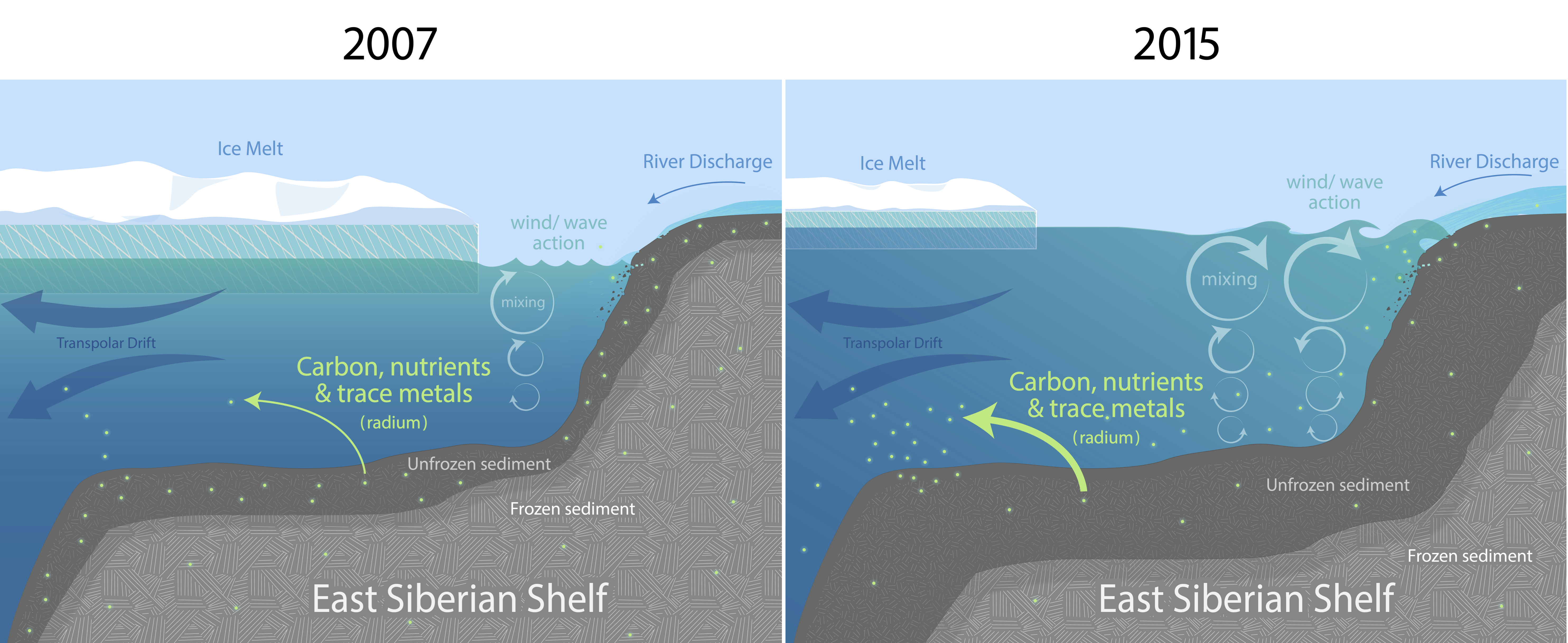Arctic Radium Isotope Observing Network (ARION)
The Arctic is one of the most rapidly warming regions on earth, with observed increases in river discharge, coastal erosion, and permafrost thaw. Reduced ice cover in the shallow shelf seas has resulted in a more turbulent water column, which can enhance sediment-water exchange. Together, these processes serve as important controls on Arctic surface water chemistry, and may enhance fluxes of carbon, nutrients, and trace metals to the coastal Arctic Ocean. These shifts in shelf sea chemistry are rapidly propagated to the central Arctic via the Transpolar Drift (TPD), a surface current that crosses the Arctic basin. Recent studies have shown that the chemical fingerprint of the TPD has changed due to an increased flux of shelf-derived materials. However, the temporal resolution of chemical tracer studies in the Arctic has generally been poor, making these findings tenuous at best.
The ARION project establishes a combined shipboard and mooring-based observational network for radium isotopes in the Arctic Ocean in order to detect and understand long-term changes in material fluxes from Arctic shelves to the central basin. Radium isotopes are continuously produced at ocean boundaries and are soluble in seawater. Hence, radium serves as an analogue for similarly sourced shelf-derived materials, such that quantifying the change in the radium flux through time will improve our understanding of climate-related changes in the cycling of biologically important elements.
We hypothesize that Arctic warming is indirectly leading to increases in the delivery of terrestrially- derived solutes carried by the TPD, which is also a nutrient source to the North Atlantic Ocean. Overprinted on the hypothesized long-term increase is a seasonal cycle in material fluxes from the shelf, driven in part by seasonal variability in river discharge and water column overturning induced by sea-ice formation.
Through a partnership with another NSF-Arctic Observing Network program (NABOS/Switchgear), we will participate in bi-annual cruises to collect spatially distributed water column samples and deploy a first-of-its-kind in situ radium isotope sampler onto mooring arrays. In addition to our own sampling, we have a strong network of international collaborators that will contribute radium data to ARION and help characterize the nearshore shelf environment and the downstream TPD signal.

The loss of sea ice over Arctic shelves leads to longer open water seasons and increased wind- and wave- driven turbulence. This increased mixing can facilitate the release of shelf-derived materials into the overlying water column. In Kipp et al. 2018, we showed that Ra-228 levels in the Transpolar Drift had doubled between 2007 and 2015, and we hypothesize that this was driven by increased mixing over the East Siberian Shelf. (Graphic by Natalie Renier, WHOI Creative Studio)
Partners/Collaborators
- Rowan University, Department of Environmental Science
- McLane Research Laboratories, Inc.
- Diane Burko, artist/explorer
